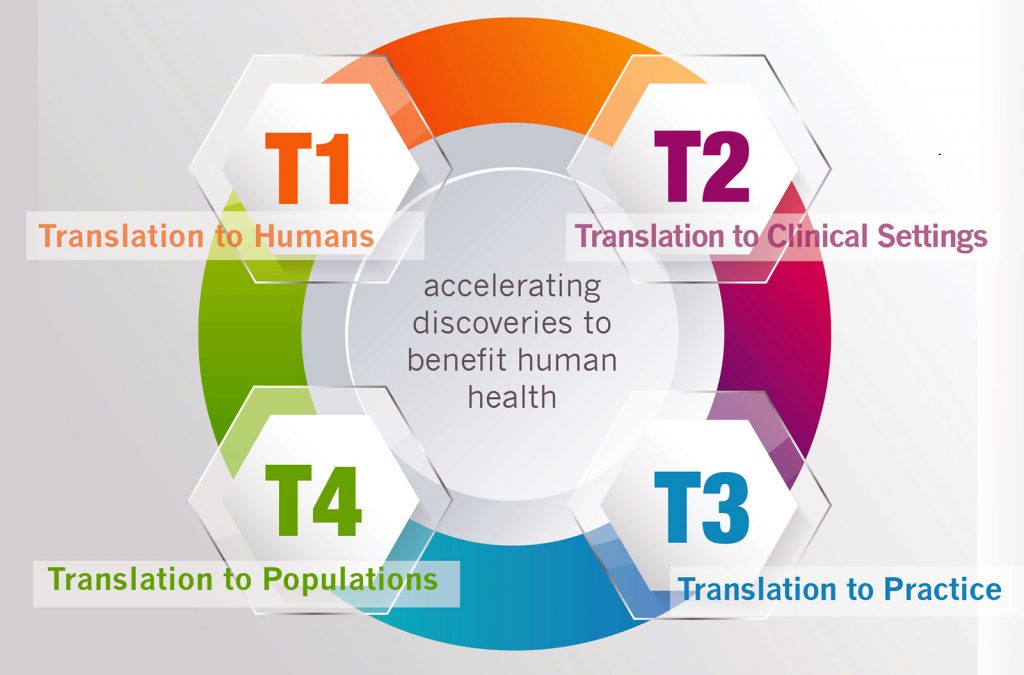The ultimate question regarding any medical research is whether it addresses a real need and improves people’s lives by preventing, curing or improving the outcomes of disease. Translational science is about “translating” new knowledge into health benefits through collaboration and across a variety of scientific disciplines. Translational science involves a cycle of innovations from discovery to community and back again. At each step, collaboration among a wide variety of scientific disciplines is critical to success and to assure relevance and effectiveness of the research.
Phases of Translational Research
There are four phases of translational research.
- T1 – Translation to Humans: Taking a basic scientific discovery in the laboratory and finding a use for it in human health.
- T2 – Translation to Clinical Settings: Assessing the value of the potential health use and developing evidence-based guidelines.
- T3 – Translation to Practice: Attempting to move the evidence-based guidelines into practice in health care.
- T4 – Translation to Populations: Evaluating the “real-world” health outcomes of an application.

